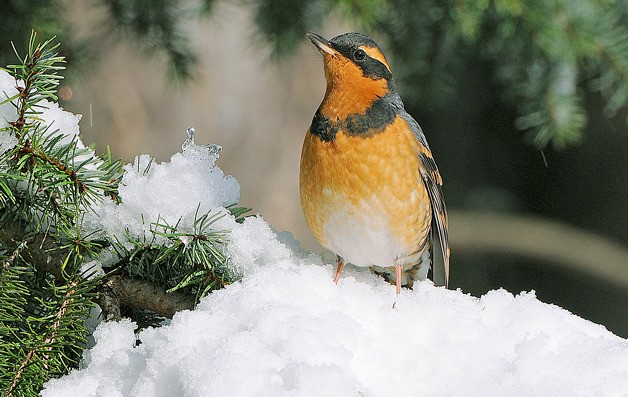Calling all citizen scientists and bird lovers. Whidbey Audubon Society is coordinating two bird counts this month on Whidbey Island.
Teams of people will count birds Saturday, Dec. 15 from the Greenbank Farm to the South End of Whidbey. On Saturday, Dec. 22, teams will cover North Whidbey Island, including the Crockett Lake/Keystone Spit area and north to Deception Pass. The time of each count is usually from 8 a.m. until 4 p.m., rain or shine. Some go out earlier in hopes of finding owls.
Coordinators welcome early sign up of volunteers at any birding skill level. Once teams are put together, each team captain arranges a specific meeting location for his or her team to assure that the entire area is covered. There is no cost to participate. Volunteers should dress for the weather and carry a lunch.
Those who wish to participate in the South Whidbey bird count on Dec. 15 may contact coordinator Govinda Rosling at govinda@whidbey.com. She is also looking for volunteers to work in the kitchen to feed hungry birders at the end of the day when everyone gathers after 4 p.m. at Trinity Lutheran Church in Freeland to record the number of birds counted, get warm, share experiences and eat. The church is located at 18341 Highway 525.
To participate in the North Whidbey bird count Dec. 22, volunteers may email coordinator Jill Hein at jillhein@comcast.net. She is also looking for team leaders. After 4 p.m. teams meet at the Pacific Rim Institute at 180 Parker Road, south of Coupeville, to record the numbers of birds counted and enjoy storytelling, food and drink.
The Christmas Bird Count is a national event and is the longest-running wildlife census in the country, now in its 113th year. Information collected and gleaned from this data by researchers, conservation biologists and conservation organizations, like National Audubon Society, use this data to help scientists and policy makers identify threats to birds and their habitat. Data from the bird count has been used in countless research articles that influence local, state and national conservation legislation.
Historically it was a holiday tradition known as the Christmas “side hunt.” The goal was to choose sides, head into the fields with a gun to kill and then pack feathered and furred quarry back to be counted. The side with the most dead birds and animals won.
The tradition changed when Frank Chapman, an ornithologist and officer in the National Audubon Society, offered an alternate tradition. He, along with other conservationists, decided that rather than kill birds, it was better to count them. The first Christmas Bird Census took place Dec. 25, 1900, when 27 citizen scientists counted birds in 25 places from Toronto, Ontario to Pacific Grove, Calif.
For more information about the Christmas Bird Count, visit the website birds.audubon.org/christmas-bird-count.



